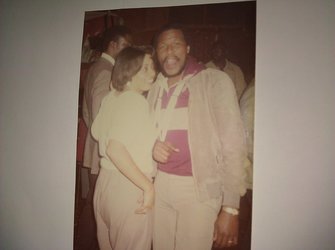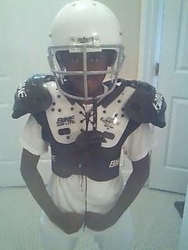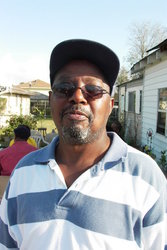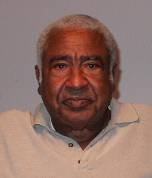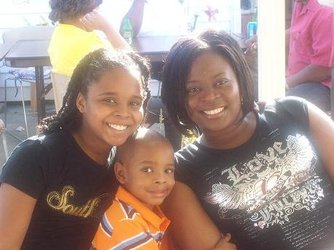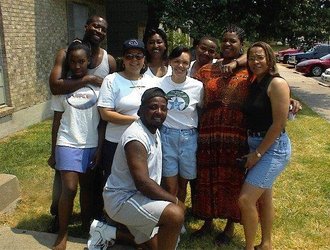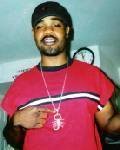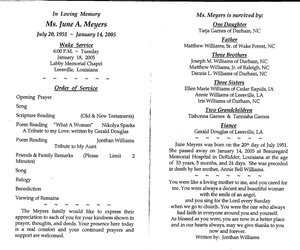FOR THOSE...who want to view the family website, I NEED your email address to SEND you an invite or if you KNOW a family members' email address SEND it to me at my email address... retiredlawman572@gmail.com
According to the 1807-1860 "Slave, Mulatto and people of color" manifest from the slave ship "Alexandria", this document listed on it's manifest of slave cargo, one slave named Charles Douglas. Charles was listed as being approximately 21 years old, inferred year of birth 1822, and 5'8" in height. During that time, all vessels with slave cargo, by law, had to provide a manifest which listed a slave's inferred name, inferred age, height and color (black/mulatto/yellow) who was aboard the vessel. Every vessel arriving in port had to produce this slave manifest until a 1807 law banned the trans-Atlantic slave trade to the U.S. The slave ship "Alexandria arrived at the port of Alexandria, District of Columbia (currently the state of Virginia). The port of origin or country where Charles was extracted from and the final destination of the slave ship "Alexandria" is unknown at this present time. The manifest further revealed, upon leaving Alexandria, District of Columbia, the "Alexandria" then traveled the Atlantic coast slave route to an unknown location possibly New Orleans, Louisiana. The First Shipper/Owner name was Robert N. Windsor who lived in Alexandria and the Second Shipper/Owner name was Thomas Boudar who lived in New Orleans according to the manifest. A 1807 law banned the trans-Atlantic slave trade to the U.S. As of January 1, 1808, slaves could still be bought and sold-and transported within the country. The same law which banned foreign slave trade also regulated the internal transportation of slaves, requiring masters of vessels carrying slaves in coastal waters to provide a manifest detailing their slave cargo when leaving or entering a port. Ports of departure or intended arrival ports stretched from Baltimore, Maryland to Texas on the Gulf of Mexico. At this time, it is unknown where Charles Douglas feet first touched U.S. soil, but additional documents revealed Charles had an inferred wife named Nellie and the couple produced 4 off springs (according to the 1870 U.S. Federal census).
History revealed that on January 1, 1863, Republican President Abraham Lincoln issued the second and final Emancipation Proclamation freeing all slaves in territories held by the Confederates. This document was signed nearly two years prior to the end of the Civil War. Most freed slaves, were caught between a rock and a hard place, not knowing where to go or what to do, or even if their slave owners would allow them their freedom. The majority of the newly freed slaves remained with their "former" slave owners and became “sharecroppers”. Other newly freed blacks moved on in an attempt to sustain life away from their slave owners dominance. Most slaves knew only farming, and after receiving their freedom, they chose to do just that...farm. Many freed slaves remained on their former slave owner's land to work the fields. By doing so, they received seeds, and tools from their former owners. But, they had to share more than half of their profits from the fruits of their labor in exchange for housing from their former slave owners.
Eleven years prior to the signing of the Emancipation Proclamation in 1863, the country experienced the "Gold Rush" between the years of 1848 thru 1859. There was a mast migration westward. With settlements popping up west of the Mississippi River, this movement gave rise for the need to build a railway system. Railroad work opened numerous opportunities to blacks and other non-whites who were blessed with other labor skills such as blacksmith, carpentry and the like. Even though President Lincoln signed the Emancipation Proclamation in 1863 which freed all slaves, it wasn’t until December 6,1865, with the passing of the Thirteen (13th) Amendment of the United States Constitution by Congress, that slavery was abolished. This occurred eight months after the assassination of Lincoln, a Republican, who attempted to help people of color get out of bondage. During the Reconstruction, freed blacks were promised 40 acres and a mule which was passed by Congress but vetoed by Lincoln’s successor, Andrew Johnson. Nevertheless, both groups of blacks, sharecroppers and the blacks who opted to venture off from their former masters, had to beware of the ever present, active and very dangerous white supremacy groups throughout the north and south who attempted to keep the newly freed blacks suppressed. Blacks were now subject to “Jim Crow” laws.
In the late 1800's, black people were still considered property and were made to feel inferior to the white man. For "Negroes" to own property, like their white counterparts, was unheard of during this time in history. But, William Overton, born to a Choctaw woman and a black man, was somehow different. William was a runaway slave from the state of Tennessee who managed to make it to Greensburg, Louisiana where he met Jane Gordon. This black Choctaw Indian, with black straight hair, worked the railroads in Tennessee and did the same upon his arrival in Louisiana. According to relatives, William worked at "PMA" railroads in Greensburg for one day before being let go by the company after learning of his situation. William managed to purchase acres of land in St. Helena Parish and married Jane Gordon in the late 1800's. Their marriage produced twenty two (22) off springs. William Overton used his railroad skills and became a blacksmith and a farmer. He made farming tools such as hoes, rakes, shovels, plow blades and bored drinking water wells. William accumulated approximately 50-57 acres of land outside of the Township of Greensburg. He later became a Methodist minister.
Mike Douglas, the son of slave Charles Douglas and inferred wife Nellie Douglas, met and married Harriet Rowley. In May of 1904, they gave birth to James Alton Douglas. Harriet was a white woman, considered a "mulatto" with "long wavy hair down her back. Harriet was raised on the "Blairstown Plantation" located between Clinton and Coleman Town, Louisiana. James was the Xth of 11 siblings. James was a tall handsome light complexioned, slim, but strong scraping buck, with a mouth full of gold teeth and cat eyes (gray). Between 1919-1921, James married Mary Alma Overton, daughter of runaway slave William and Jane Overton. Mary was the xxth child of 22, who was born on July 4, 1902. Mary Alma was a short, very petite, soft spoken, dark complexioned, religious lady. In 1921, Mary became pregnant and she lost her first born child, Wilbert Douglas. In that same year, James and Mary moved to New Orleans. In 1922, the second child, Clara, was born in New Orleans at Charity Hospital. Clara was the first of eight Douglas off springs born in New Orleans at Charity Hospital. The "Depression of 1929" was hard on the Douglas family in New Orleans. It was hard for James to find work, but Mary was effectively able to support the family by working at the "Chalmette Laundry" located on Tulane and Jeff Davis. Mary also worked part time for an old white lady named Ms. Murphy, who was very nice and generous to Mary.
After the death of her mother, Jane Overton, on August 11, 1939, Mary returned to Greensburg to care for her ailing father, William Overton. In 1940, Clara Douglas became the first Douglas to graduated from high school. She later left Louisiana in route to Philadelphia where she worked and went to school. In 1942, the 10th Douglas offspring, Floyd Douglas, was delivered, in Greensburg, by a mid-wife, Annie Simms. During the birth of Floyd, Mary experienced complications. Doctors informed Mary she should not allow another child to be birthed by a mid-wife. On January 5, 1949, William Overton died and The U. S. got involved in World War II. In 1946, Mary got pregnant for the eleventh time. When the time came, Mary heeded the advice of the doctors and traveled to New Orleans where Martha Douglas was born at CHNO like eight of her other siblings. Wilbert and Floyd were the only Douglas babies born in Greensburg, LA.
Life was simple in Greensburg. Learning how to live off the land was powerful stuff. But for some family members, they did not care for it. There were no modern conveniences or appliances—no television, no radio, no toaster, no fan, no A/C, no heater, no phone and no running water. The water was retrieved from the well, which was dug by William Overton with a three foot long galvanized bucket approximately 3-4 inches in diameters. The well was dug out about 20-30 feet below the ground surface. The galvanized bucket was dropped into the well, then once full of water, it was pulled from the well providing clean chilled spring water. There were no indoor toilet facilities. The wooden outhouse was located about 80 yards from the house. We were fortunate to have a “two- seater” outhouse with the luxury of having a large "Sears" catalog to view while handling the business at hand. In the end, the pages were used... in the end as toilet paper. It wasn't until Mary brought a number 3 galvanized metal tub back from New Orleans that bathes seem to be pleasurable. Before that, all bathes were taken outside in a "cut in half" wooden barrel. If water needed to be warmed, it was done on the wood burning stove or in a huge black cast iron pot which was located outside in front of the house "On the hill". There was no electricity. After dark, kerosene lamps were used. The meager six room house consisted of the main bedroom with a fireplace, guess bedroom, girls bedroom, boys bedroom, kitchen with a wood burning stove, and a dining area with a huge wooden picnic table. The house was very drafty with only that large wood burning fireplace in the grandparents bedroom. On cold nights, one would have to stand in front of the fireplace or stove, warm up, then run jump into the bed to warm your spot. The only convenience to speak of was the “chamber pot”. A little white porcelain pot with a red or blue stripe around the top of the pot. The "chamber pot" was used as a toilet late at night saving one a trip in the dark to the outhouse.
As young children, coming from the city (New Orleans), we enjoyed spending summers with our grandparents, James and Mary Alma Douglas. We got to play with all of the farm animals on the "Hill", walk through the woods to Uncle Fred and Aunt Daisy's (Overton) farm for tea cakes or down the road to Uncle Willie Boy's (Overton) farm to visit and ride his horses. We even got to experience "picking cotton" at Aunt Flonee (Candaisy Overton) and Uncle Edward's farm.
Greensburg became the annual meeting place for all of the Douglas’ offsprings and their families on July 4th. Not only was the 4th a national holiday, the 4th had another significant meaning to the Douglas clan...it was Mary Overton Douglas birthday. To celebrate this occasion, the Smalls, the Taylors, the Darensbourgs, the Conners, the two middle Douglas brothers, and the Sparks would drive to Greensburg from New Orleans with their families. While the Askews, would travel from Riverside, California in their motor home, the Bells would drive in from Denison, Texas, the oldest Douglas brother family would track in from Reno, Nevada, and the baby boy would come in from Los Angeles, California. For years and years, the Douglas siblings and their offsprings continued the tradition and gathered on “The Hill” to share the love on this special date. James and Mary Douglas were only the beginning...they were the source of inspiration for the family. James, a strong black male figure and Ms. Alma, the soft spoken matriarch of the family, strived very hard to keep their children, their grandchildren, and their great-grandchildren going in the right direction. They steered our hearts toward God, and they taught us to share with and to love one another. Those family traits we should NEVER FORGET...because WE WERE RAISED THAT WAY! We are family !!! We are Douglas descendants...and proud of it!!!
As our beloved Douglas Family members began to suffer from age and various illnesses, our Heavenly Father began calling them home. We now celebrate their lives and their memories in our hearts, minds and in our spirits.
The cause of death and the burial location of Wilbert Douglas is unknown at this time.
On June 23,1965, our beloved grandfather, James Alton Douglas Sr., affectionately known as "Pawpaw Jim or Big Daddy", was called home as a result of lung cancer. His remains were laid to rest at the grave site located at Turner Chapel in Greensburg, Louisiana.
On September 3, 1978, Clara Douglas Small succumbed to breast cancer. She was laid to rest at the grave site located at Turner Chapel in Greensburg, Louisiana.
On December 2, 1978, our beloved grandmother, Mary Alma Overton Douglas, affectionately known as "Big Mama" succumbed to cancer of the pancreas. Her remains were laid to rest at the grave site located at Turner Chapel in Greensburg, Louisiana.
On February 4, 1979, Bernice Douglas Askew succumbed to cancer. Her remains were laid to rest at the grave site located at Riverside National Cemetery in Riverside, California.
In June 1986, Marguerite Douglas Conner succumbed to her illness and was laid to rest at xxxxx.
On April 20, 1992, Ida Mae Douglas Darensbourg succumbed to her illness and was laid to rest at Mt. Olivet Cemetery.
On April 23, 1993, Geraldine Douglas Bell succumbed to her illness. Her remains were laid to rest at the grave site located at Fairview Cemetery in Denison, Texas.
On August 6, 1995, James Alton Douglas Jr. succumbed to his illness. His remains were laid to rest at the grave site located at Restlawn Park and Mausoleum in Avondale, Louisiana.
On January 29, 2007, Martha Douglas Sparks succumbed to a cardiac arrest. Her remains were laid to rest at the grave site located at Turner Chapel in Greensburg, Louisiana.
On November 27, 2008, Floyd Alexander Douglas succumbed to cancer. His remains were laid to rest at the grave site located at Turner Chapel in Greensburg, Louisiana.
On February 4, 2013, Earl Wicker, James Douglas Sr. son out of wedlock, succumbed to a heart attack. His remains were laid to rest at the grave site located at Turner Chapel in Greensburg, Louisiana.
On March 22, 2014, Fred Buster Douglas succumbed to his illness. He was laid to rest, with military honors, at Restlawn Park and Mausoleum in Avondale, Louisiana.
I am the third child of Clara Douglas Small. Clara was the second offspring of James and Mary Douglas. I have extremely fond and everlasting memories of my grandparents, parents and all of my maternal aunts and uncles ...The Douglas Clan. Since 2009, I have taken on this task of attempting to inform the younger descendants of the Douglas/Overton lineage, especially the Douglas side of the ledger, as to the history of that era and how life was as I was growing up, as a Douglas descendant. Also, how it was being around my grandparents, in Greensburg, Louisiana, during those summer months while on summer vacation from school in New Orleans. My inspiration in taking on this monumental task stems from Alex Haley book/movie "Roots". Thanks for the inspiration Mr. Haley.
I would like to thank my Couzans Shasta "Penny" Darensbourg, daughter of Ida Mae Douglas, and Rocquelle "Rocky" Overton Robins, great granddaughter of Johnny Boy Overton, for their assistance in these efforts to compile information regarding the Douglas/Overton clans.
Sincerely,
Anthony Rubien Small Sr.
NOTE: CHECK OUT THESE FOUR VIDEOS ON 'YOUTUBE'
1.) VTS O1 1 The Douglas Family Collection Part1 and Part2". 2.) "My Brother Be Blessed"
COPY one of the above videos, GO to youtube.com, PASTE the copied video into the search box and ENTER. Enjoy...!!!
***A reminder***FOR THOSE...who want to view the family website, I NEED your email address to SEND you an invite or if you KNOW a family members' email address SEND it to me at my email address...retiredlawman572@gmail.com

